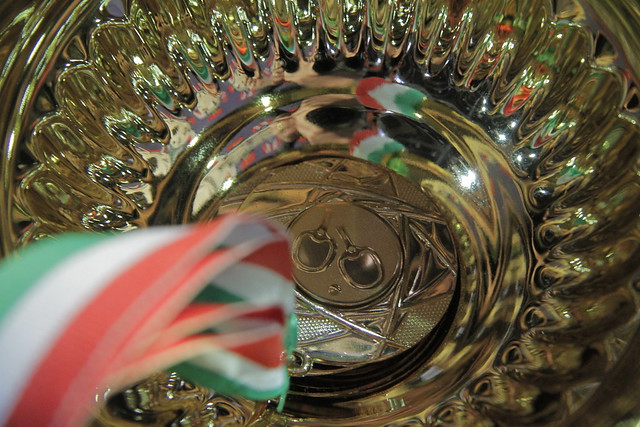by Ian Marshall, ITTF Publications Editor
In the Hungarian capital city, in the Men’s Singles event, he lines up alongside colleagues Chen Chien-An, Liao Cheng-Ting, Sun Chia-Hung and Lin Yun-Ju.
Winner of the Boys’ Singles title just under a decade ago at the 2008 World Junior Championships in Madrid, Chen Chien-An is now 26 years old, Liao Cheng-Ting and Sun Chia-Hung are both 21 years of age whilst Lin Yun-Ju is only 16 years old. Chuang Chih-Yuan is the team captain; he sets the example.
Nowadays, no doubt in Chinese Taipei, there is a host of younger players who want to play like Chuang Chih-Yuan; his colleagues who are competing in the Hungarian capital city are not too dissimilar in style.
It was very different for Chuang Chih-Yuan. He started to play in 1989, when eight years old; it was an age of change. The pen-hold grip style of play favoured in Asia was more and more giving second best to powerful European shake-hands grip style; to break with tradition and with a style that had served the continent so well was a great wrench.
Chuang Chih-Yuan was very much at the vanguard of a new era; now the shake-hands grip is the norm but you cannot judge history by what came later, only by what went before. Chuang Chih-Yuan had to break with tradition; as he progressed to gain a place in the national team, the leading name in Chinese Taipei was Chiang Peng-Lung.
Commencing in 1999; overall Chiang Peng-Lung won three ITTF World Tour Men’s Singles titles and with Chang Yen-Su no less than six Men’s Doubles events; the common factor, both were right handed pen-holders, both used one side of the racket only, both exuded power. Chuang Chih-Yuan broke the mould.
The decision to adopt a style totally different to his predecessors was proved correct. Now in 2018, Chuang Chih-Yuan has just right to hold the accolade of Chinese Taipei’s greatest ever player. The record, irrespective of finals reached, titles won, sets the example for those accompanies in Budapest, all at least one generation younger.
It is his sheer tenacity that is to be admired. He has made a total of 18 appearances at the ITTF World Tour Grand Finals, a total none can match, he has competed in no less than 15 occasions in the Men’s World Cup, only Sweden’s Jan-Ove Waldner, Belgium’s Jean-Michel Saive and Vladimir Samsonov of Belarus can better.
However, if there is one feat that underlines his resolve, it was in 2002. In that year, he reached three ITTF World Tour Men’s Singles finals; he finished in runners up spot each time. In Doha, he was beaten by Jean-Michel Saive, in Kobe by Kalinikos Kreanga of Greece, in Eindhoven by China’s Wang Hao.
At the end of the year in Stockholm, he avenged his defeat in Kobe. He beat Kalinikos Kreanga to win gold at the Grand Finals.
Now that is the example to follow.











